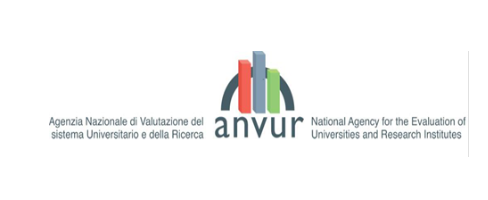SMART CITY POLICY BETWEEN INSTITUTIONS AND CITIZENS: THE PERSPECTIVE OF THE CITY OF MILAN
DOI:
https://doi.org/10.36004/nier.es.2023.2-02Keywords:
infrastructures, mobility, smart city, technologies, transportationsAbstract
In the environmental and climate issue, a decisive role is played by mobility. In recent years we are witnessing a kind of transportation revolution, especially urban transportation, with a sustainable mobility.
It is today one of the many aspects in which cities need to renew themselves, thus facilitating their transition to the smart city dimension.
The smart city represents the latest trend in urban planning aimed at improving the quality of life. It is now widely talked about: in politics, for example, the concept is used to illustrate new urban development strategies aimed at improving the architecture, mobility and infrastructure of metropolises.
However, although the idea of a smart city is based on the use of modern technologies, it is considered "smart" when it innovatively manages its economic and environmental resources, housing and transportation policies, relations and methods of administration.
Smart cities focus on environmentally and sustainable urban development, using technology to reduce pollution or generate alternative energy.
The study therefore aims to analyze how a smart city develops and what are the main actors and elements that play a key role in the analysis of the topic: institutions and citizens.
By harnessing information communication technology and improving local infrastructures and transports, the institutions of the city of Milan proactively monitored city dynamics, drove positive changes, and enhanced residents’ quality of life.
This enabled direct engagement with both residents and infrastructure, making Milan one of the most cutting-edge cities not only in Italy, but also in the international context.
Downloads
References
Albino, V., Berardi, U., & Dangelico, R. M. (2015). Smart cities: definitions, dimensions, performance, and initiatives. Journal of Urban Technology, 22 (1), 3–21. https://doi.org/10.1080/10630732.2014.942092
Amini, M.H., Boroojeni, K.G., Iyengar, S.S., Blaabjerg, F., Pardalos, P.M, Madni, A.M. (2018). A Panorama of future interdependent networks: from intelligent infrastructures to smart cities. In: Studies in Systems, Decision and Control 145, (pp. 1-10), https://doi.org/10.1007/978-3-319-74412-4_1
ARUP (2014). Urban Mobility in the Smart City Age. http://publications.arup.com/publications/u/urban_mobility_in_the_smart_city.it
Cassa Depositi e Prestiti (2013). Smart City. Progetti di sviluppo e strumenti di finanziamento. https://www.cdp.it/resources/cms/documents/41b7739ecb2ab7795e4815c9656d2091.pdf
Bosetti, Simone. (2014). Policy recommendations: for EU sustainable mobility concepts based on CIVITAS experience. ISBN 978-80-86502-77-9
Comune di Milano, (2023). Linee guida, Milano Smart City. https://economiaelavoro.comune.milano.it/sites/default/files/201902/milano%20smart%20city%20-%20linee%20guida.pdf
Confindustria, (2018). Smart cities: l’eccellenza di Milano nel confronto europeo. https://ilclubdelletestepensanti.it/wp/wp-content/uploads/2018/10/pres-assolombarda.pdf
Harrison, C., Eckman, B., Hamilton, R., Hartswick, P., Kalagnanam, J., Paraszczak, J., Williams, P. (2010). Foundations for smarter cities. IBM Journal of Research and Development 54(4), 1-16. https://doi.org/10.1147/JRD.2010.2048257
Helbiz monopattini Milano. (2019). https://www.moto.it/news/6-mila-monopattini-e-oltre-15-mila-bici-ecco-come-cambia-la-flotta-in-sharing-a-milano.html,
Milano Bike City. (2019). Ciclica, Milano bicycle Coalition, Kindi Associazione. https://www.milanobikecity.it/il-progetto/.it
Myeong, S., Jung, Y., & Lee, E. (2018). A study on determinant factors in smart city development: an analytic hierarchy process analysis. Sustainability, 10(8), 1-17. https://doi.org/10.3390/su10082606
Nam, T. & Pardo, T.A. (2011). Conceptualizing smart city with dimensions of technology, people, and institutions. In: The Proceedings of the 12th Annual International Conference on Digital Government Research. pp. 282–291. https://www.ctg.albany.edu/media/pubs/pdfs/dgo_2011_smartcity.pdf
Neirotti, P., De Marco, A., Cagliano, A., C., Mangano, G., Scorrano, F. (2014). Current trends in Smart City initiatives: some stylised facts. In: Cities, 38, pp. 25-36. ISSN 0264-2751. https://doi.org/10.1016/j.cities.2013.12.010
Nicma Informatica. (2023). Smart City: Milano è pronta, e il resto del paese? https://nicma.com/smart-city-milano.it
Penaska M., Veas A. (2019). Possibilities of tracking city indicators in the sense of the Smart city concept, Transportation Research Procedia 40 (2019) 1525–1532, https://doi.org/10.1016/j.trpro.2019.07.211
Picon, A. (2019). Urban infrastructure, imagination and politics: from the networked metropolis to the smart city. International Journal of urban and Regional Research. 42(2) 263–275, https://doi.org/10.1111/1468-2427.12527.
Redazione FPA, ICity Rate (2018). Milano si conferma città più “smart” d’Italia: la seguono Firenze e Bologna. https://www.forumpa.it/citta-territori/icity-rate-2018-milano-si-conferma-citta-piu-smart-ditalia-la-seguono-firenze-e-bologna/
SmartforCity (2016), Pubblicato il nuovo report Smart City Index. http://smartforcity.it/le-citta-smart/item/584-pubblicato-il-nuovo-report-smartcity-index-2016
Sharing Mobility Observatory, (2019). Rapporto nazionale sullo sharing mobility. https://osservatoriosharingmobility.it/
Sodhro, A.H., Pirbhulal, S., Luo, Z., Hugo .C. de Albuquerque, V. (2019), Towards an optimal resource management for IoT based Green and sustainable smart cities. Journal of Cleaner Production 220, 1167–1179, https://doi.org/10.1016/j.jclepro.2019.01.188
The European House-Ambrosetti per Finmeccanica, (2012). Smart Mobility. Muoversi meglio per vivere meglio. https://st.ilsole24ore.com/pdf2010/SoleOnLine5/_Oggetti_Correlati/Documenti/Notizie/2012/09/smartmobility%20.pdf?uuid=712c3e1c-f98f-11e1-be2d-a33690674bee
Van Den Buuse, D., & Kolk, A. (2019). An exploration of smart city approaches by international ICT firms. Technological Forecasting & Social Change, 142, 220-234, https://doi.org/10.1016/j.techfore.2018.07.029
Yahia, N. Ben, Eljaoued, W., Bellamine Ben Saoud, N., Colomo-Palacios, R. (2021). Towards sustainable collaborative networks for smart cities co-governance. International Journal of Information Management 56, 102037. https://doi.org/10.1016/j.ijinfomgt.2019.11.005















